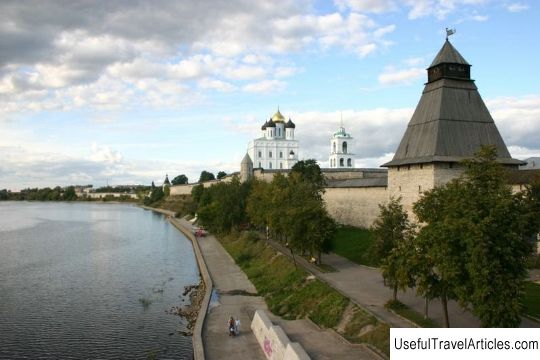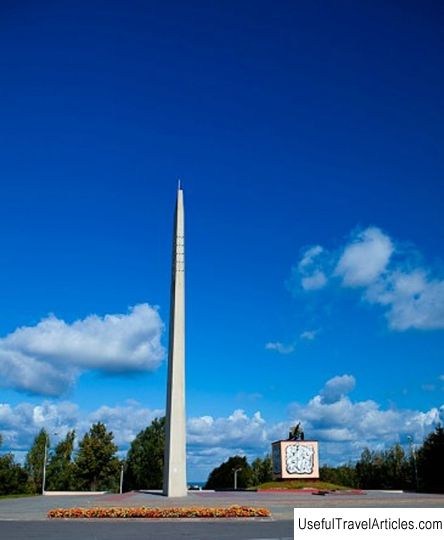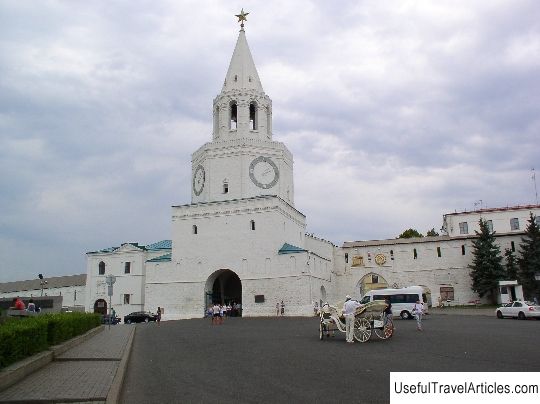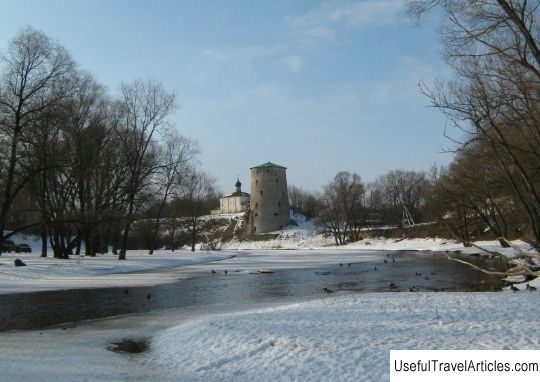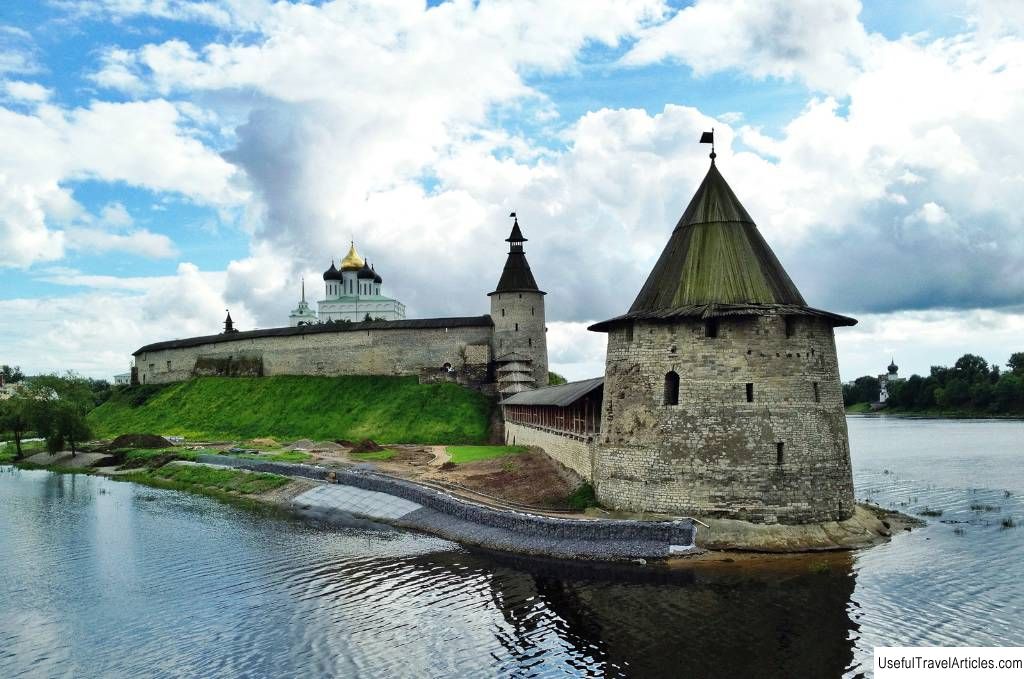Rybnitsa Tower of the Pskov Kremlin description and photos - Russia - North-West: Pskov
Rating: 8,7/10 (764 votes) 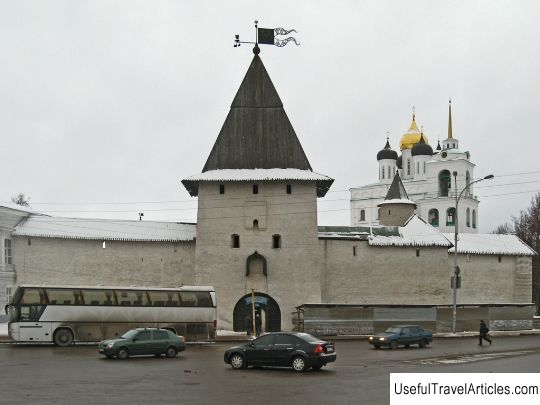
Rybnitsa Tower of the Pskov Kremlin description and photos - Russia - North-West: Pskov. Detailed information about the attraction. Description, photos and a map showing the nearest significant objects. Photo and descriptionIn the 15th century, at the same time as Vlasyevskaya, the Rybnitsa Tower of the Pskov Kremlin was built. Its height was 20 meters. Like every tower, it had a wooden tent, an observation tower and a warrant. The tent had a quadrangular base. There were six loopholes at the top. There were high gates under the tower, through which one could get to the Kremlin. This was the main gate leading to the Middle City. Their name comes from the name of Rybniki, a shopping center on the banks of the Pskova. There were trade stalls (Torg) where fresh fish was sold. To go down to the river, one had to go through the Holy (Rybnitsa) gates. According to some sources, the first mention of this building dates back to 1404. However, the chronicle mentions 1469 as the time when the Holy Gates were built. It says that a large stone gate was built this year. The work was performed by a Pskov master and received 30 rubles of silver. It was the first tower to have a four-pitched tent. She was depicted on icons against the background of Pskov. The main Pskov streets, which led to the Novgorod and Gdovsk roads, as well as to the road to the south, originated from the Rybnitsa tower. By its location, the tower is located in the Dovmont town. Its name is associated with the name of Prince Dovmont, who, due to internecine wars, was forced to flee from Lithuania to Pskov with a small part of the Lithuanian population. Here he was baptized with the name Timothy. A year later he was elected prince of Pskov, and he ruled the city with dignity for 33 years. Blessed Prince Dovmont-Timofey is canonized. He made the Pskov Kremlin an impregnable fortification. At that time, urban planning also served as a defensive system. Since the fortifications of Zapskovye were unreliable, it was necessary to strengthen the fortifications of the Kremlin and the Middle City. The Rybnitsa Tower served as the necessary additional protection. The wall, erected by the prince near the Kremlin in the 13th century, was named Dovmontova in memory of his services. This wall contains the Holy Gates. The territory enclosed by this wall is also named after him - Dovmont city, where the Holy Gates are located. This small town has long been the center of the state and church administration of Pskov. It is noteworthy that on a small territory of this city of 1.5 hectares there were 18 churches. In the 17-18 centuries, many churches of Dovmont's city were dismantled. The same fate awaited the first Rybnitsa Tower. She stood until the 18th century, then it was disassembled. The new tower over the Holy Gates was built in 1971-1972. The ancient Kremlin tower served as a model. On the night of April 27-28, 2010, as a result of a fire in the Kremlin, the tent of the Rybnitsa Tower completely burned down. After restoration work, it was restored, but now the tent has become a little less in height than the previous one. After the fire, the entrance was also opened through the Holy Gates. Until recently, there was no passage through this gate. There was a gift shop there. The new opening of the Holy Gates took place on September 23, 2010. In addition, after the restoration on November 3, 2010, the icon "Savior Not Made by Hands" was installed in the icon case above the Holy Gates. The author began work on this icon even before the fire broke out. This is Nikolai Moskalev, a monumental artist from Pskov. Taking as a basis the well-known ancient Novgorod icon "Savior Not Made by Hands", Moskalev used the Byzantine mosaic technique in his work. Before the installation of the icon above the gates, its consecration took place. It was performed by the rector of the Church of Alexander Nevsky, Archpriest Oleg Toer, with the blessing of Metropolitan Eusebius of Pskov and Velikiye Luki.       We also recommend reading Apartment building description and photo - Bulgaria: Ruse Topic: Rybnitsa Tower of the Pskov Kremlin description and photos - Russia - North-West: Pskov. |
